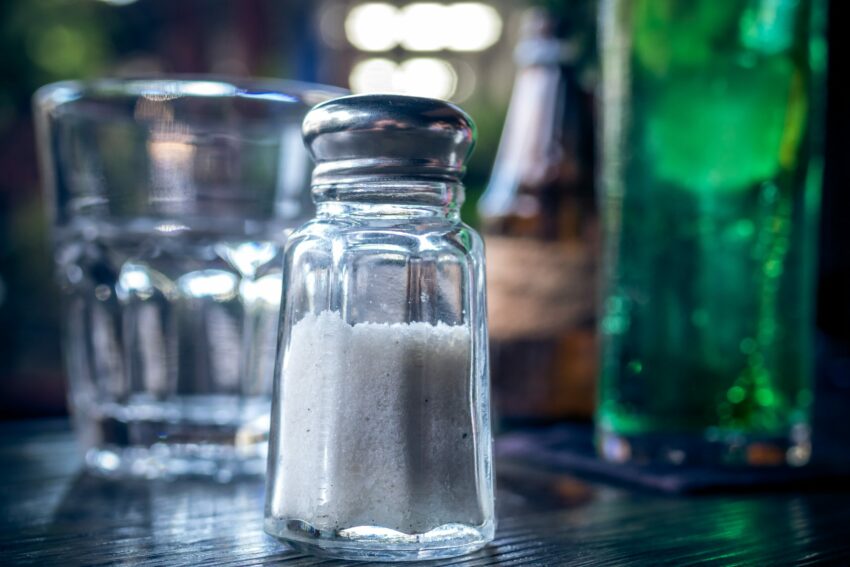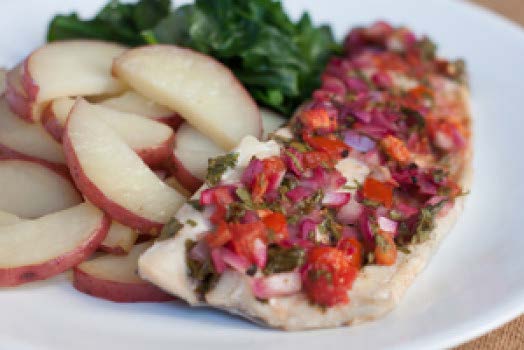Cut the Salt! – Nutrition Education Program

Click here to download information in (.pdf) | (Espanol/Spanish)
Cut the Salt! Corta la Sal!
Are sodium and salt the same thing? In short, no. Sodium is a naturally occurring mineral that is found in salt and many of the foods we eat. Salt is a compound made up of about 40% sodium and 60% chloride. The human body actually needs small amounts of sodium to work properly but consuming too much sodium can negatively affect our health. Almost 80% of the sodium we eat comes from packaged, processed foods as well as from foods we may order at restaurants. Surprisingly, a very small amount of the sodium we eat comes from the salt that we add while cooking or when at the dinner table. Let’s find out some ways we can reduce sodium in our diets!
What are the health risks of eating too much sodium?
- Increased blood pressure
- Increased risk of heart disease, heart attack & stroke
- Osteoporosis & weaker bones (due to increased calcium losses)
How much sodium is too much?
The recommended limit of sodium is less than 2,300 mg per day (the amount found in 1 teaspoon of salt).
*The average sodium intake in the US is 3,400 mg per day (the amount found in 1.5 teaspoons of salt).
What foods are high in sodium?
- Processed meats (bacon, ham, hot dogs, cold cuts)
- Quick-cooking rice and noodle mixes
- Chips, crackers, pretzels, & salted nuts
- Canned soups, beans and vegetables w/ added salt
- Frozen entrees and pizzas
- Fast food (burgers, chicken nuggets, fries)
- Pre-packaged salad dressings and dips
How can we lower our overall sodium intake?
At home:
- Make homemade broths & soups
- Add vinegar or lemon/lime juice for flavor & zest
- Use fresh & dried herbs for flavor
- Rinse canned beans & vegetables
- Use salt-free spices to zest up your dish
- Avoid adding salt to water when cooking pasta, rice, or vegetables
- Try your food first before adding table salt
At restaurants:
- Choose sides lower in sodium: fruit salad, mixed vegetables, salad greens, baked potatoes
- Ask for olive oil & vinegar/lemon juice when ordering salads
- Ask for sauces on the side
At the store:
- Read the Nutrition Facts Label
- Buy whole foods as often as possible
- Fill your cart with fruits & veggies
- Choose canned & packaged foods that say “low- sodium” or “no salt added”
- Choose lean meats, fish, & poultry
Recipe of the Month: Baked Trout

Ingredients:
- 2 lbs trout fillets (or other fish, cut into six pieces)
- 3 tbsp lime juice
- 1 tomato (medium, chopped)
- 1/2 onion (medium, chopped)
- 3 tbsp cilantro (chopped)
- 1/2 tsp olive oil
- 1/4 tsp black pepper
- 1/4 tsp salt
- 1/4 teaspoon red pepper
Directions:
- Preheat oven to 350 degrees.
- Rinse fish and pat dry.
- Place in baking dish.
- In a separate dish, mix the remaining ingredients together and pour over fish.
- Bake for 15-20 minutes or until fork-tender.
##
Material from this article is sourced from Just Say Yes to fruit and Vegetable curriculum: Lesson 15, Cut the Salt! This institution is an equal opportunity provider. This material was funded by USDA’s Supplemental Nutrition Assistance Program (SNAP) through the PA Department of Human Services (DHS).
About CAP’s Nutrition Education Program: The Nutrition Education Program (NEP), also known as SNAP-Ed, helps children and families understand the importance of eating fresh, healthy foods through education, cooking demonstrations, and recipe tastings. NEP helps children and families understand the importance of eating fresh, healthy foods through education, cooking demonstrations, and recipe tastings. Experiential learning is used to promote healthy lifestyle changes related to nutrition and physical activity. NEP offers children and adults the chance to try new foods that are healthy and budget-friendly! For more information, visit https://CAPLanc.org/NEP


